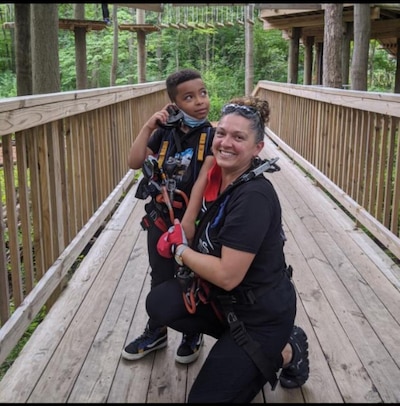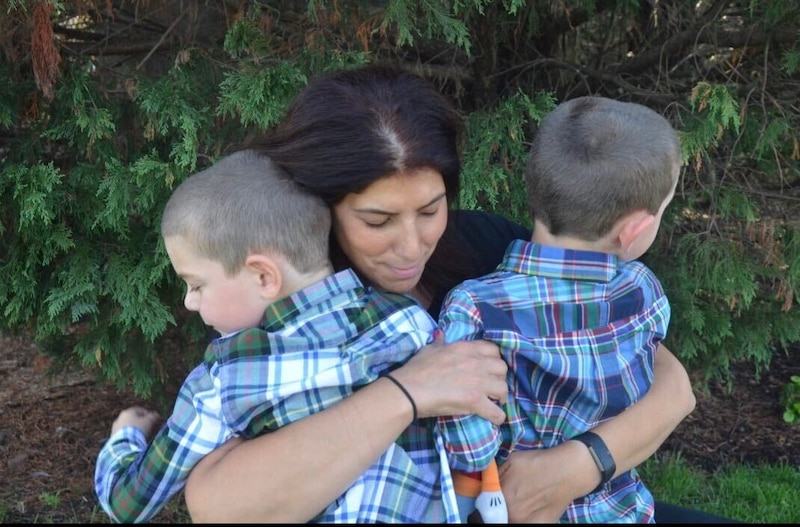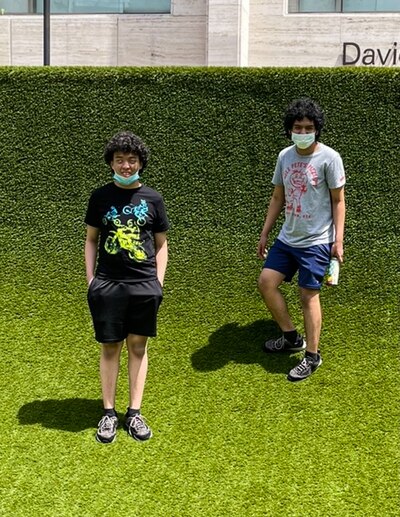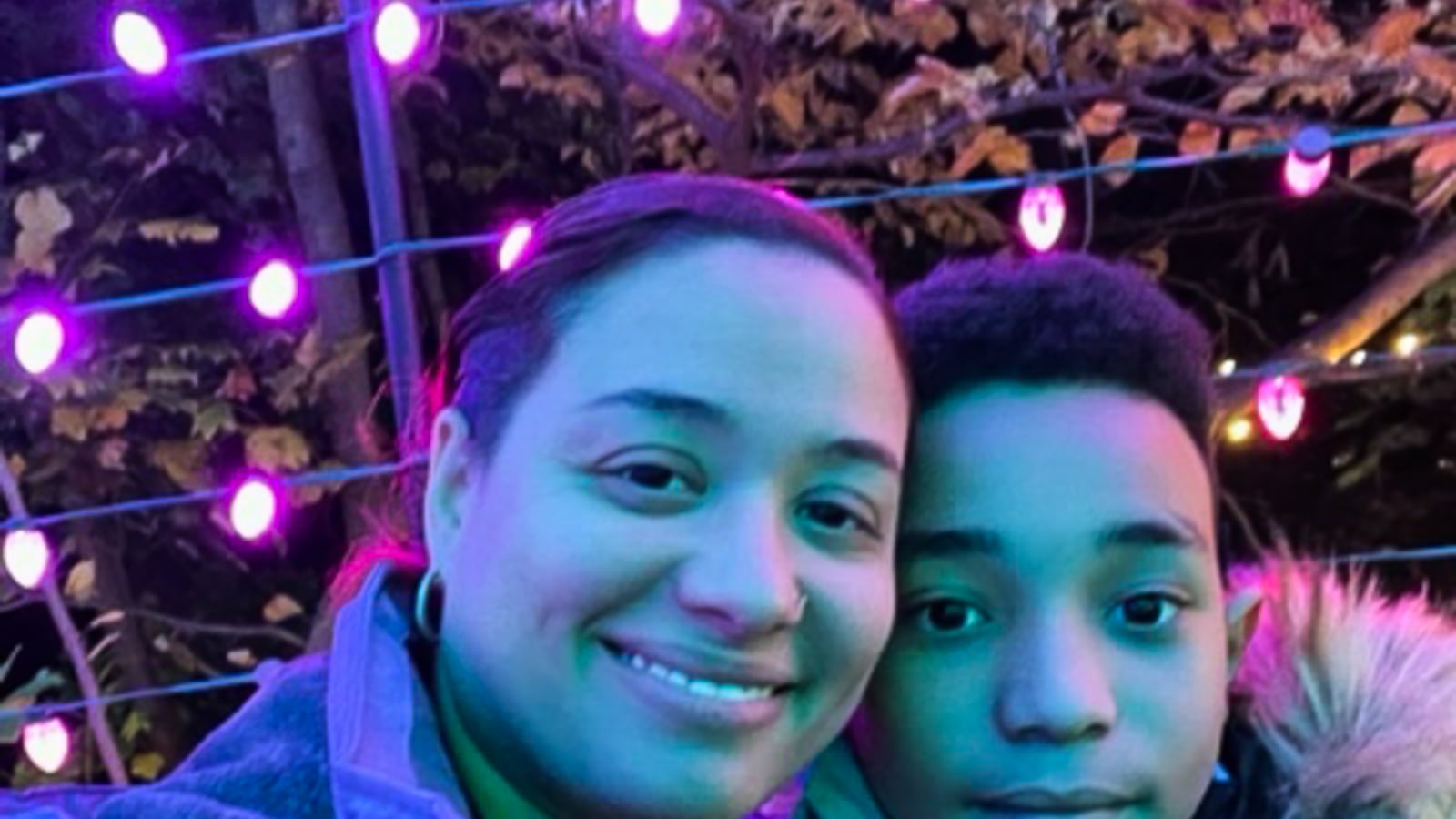This is part of an ongoing collaborative series between Chalkbeat and THE CITY investigating learning differences, special education, and other education challenges in city schools.
Bronx mom Damaris Rodriguez jumped at the chance to sign her son up for the city’s ambitious after-school program designed to help students with disabilities catch up after two years of disrupted learning.
Maliek, an 11-year-old on the autism spectrum, had missed speech and occupational therapy sessions, which sometimes overlapped with other remote instruction. So when he started attending this year’s after-school recovery program, his mom was surprised to hear he was mostly receiving math tutoring rather than the therapies he had missed.
“I was never told exactly what services he’s going to get,” Rodriguez said. “In my mind, it was ‘where’s the OT?’”
With no yellow bus service, transportation was a struggle. Plus, at pick up, he seemed exhausted and frustrated.
After a little more than a month, she stopped sending him.
The special education recovery program was pitched as a cornerstone of former Mayor Bill de Blasio’s plan to help students make up for lost learning during COVID. The city set aside about $200 million of federal stimulus funding to enable every school to create their own after-school and Saturday programs, offering small group sessions in reading and math or services like speech and physical therapy that had been difficult to deliver remotely.
“The bottom line is we’re going to do something that’s never been done in the history of New York City public schools, huge new investments, very bold and ambitious approaches to bring us back from COVID and then go farther,” de Blasio said last summer.
But interviews with over a dozen parents, educators, and advocates suggest that the program’s rollout hasn’t matched the mayor’s soaring rhetoric, even as some parents say their children have benefited from the additional help.
Education department officials said the program was offered to all of the city’s roughly 192,000 students with disabilities. By the end of the school year, education officials expect 35% of these students across the city will have received the extra, voluntary services. Education department spokesman Nathaniel Styer declined to say how many students have participated to date.
The program got off to a shaky start, with the education department delaying implementation until December at many schools. School leaders couldn’t find enough educators interested in working after hours, and school officials did not guarantee yellow bus transportation, making it difficult for many children to participate.
Some parents were turned off by limited communication about what services their children would receive, even as officials vowed the program would be individually tailored based on conversations between families and teachers.
On top of that, key details were left up to individual principals, which allowed them to be flexible and meet students’ needs, but also created big gaps in the type and quantity of available services.
At certain schools, the program lasted just 10 weeks, while others are continuing through the end of the school year. City guidance said students should be eligible for additional cycles of services “as needed” beyond the fall. And with the education department’s blessing, schools had the option to provide recovery services virtually, which garnered mixed reactions among parents.
“It seems to be really inconsistent in how much they’ve been able to do for kids at different schools,” said Maggie Moroff, a special education expert at Advocates for Children, a nonprofit group. Schools are “offering what they have as opposed to what the kids need.”
Education department spokesperson Suzan Sumer emphasized the benefits of giving school leaders some leeway in running their own programs: “Our schools know our students best, and this program operates at the school level to give our students exactly what they need.”
Parents give mixed reviews
For Manhattan mom Carolyn Castro, the extra instruction has been a big help for her 8-year-old son Michael, who has a language-based learning disability.
Michael slid backward during the pandemic as his previous school struggled to provide individual help with reading and writing skills. Assignments that should have taken 20 minutes dragged on for hours.
This year, Michael is in third grade at Manhattan’s Central Park East II, where he’s getting 45 minutes a day of recovery services after school, including additional occupational therapy, which is helping him with skills such as properly writing between the lines and spacing out words on the page.
“He’s reading independently. He’s writing independently — it’s half a sentence, but it’s progress from last year,” Castro said.

But other parents said the program wasn’t what they hoped.
Brooklyn mom Michelle B. said there was no teacher available during her 12-year-old son’s first day, so he mostly played the video game Fortnite. The second session was focused on reading even though she believed he needed the most help with math.
After just a couple weeks she pulled her son, who she said fell behind during remote learning and suffers from anxiety along with outbursts that she believes are related to his academic challenges.
“I did hope that something would take shape, but it didn’t look like anything was going to get any better,” said Michelle, who asked that her last name be withheld.
Jeannine Timpone also pulled her 14-year-old daughter from her school’s program offering one hour of instruction per week with an online computer tutorial called IXL, where students would work on math lessons on their own under the supervision of a teacher.
Timpone said her daughter learns best from direct instruction. Additionally, the Bronx school offered no busing services, which would have forced Thompson to pick her daughter up at 2:30 p.m. on Mondays and drive her back to school for an hour at 4 p.m.
“They never sat with me or confirmed anything with me, so it’s not an individual recovery program,” said Timpone. “If you don’t provide the right services, I’m not sending her.”
Instead, Timpone enrolled her daughter in a paid tutoring program to ensure she didn’t fall even further behind.
Not only did some parents stop sending their children — some schools stopped offering services.
In Manhattan, one ninth grade teacher said she was able to offer her students one 10-week cycle — totaling 20 hours — of what she described as virtual tutoring. Her students also received an hour a week of extra speech therapy from a different instructor.
But her principal halted the program at the end of February, after the cycle completed, citing lack of communication and uncertainty about funding from the Department of Education.
“The idea was we would do some kind of assessment, but nobody has asked me to show any assessment of their growth,” said the teacher, who requested that her name not be published. “[Our principal] hadn’t gotten any guidance about whether the DOE would give them more funding, so we stopped.”
Long day can be hard on kids and teachers
Enticing students who are already struggling with school to stay for more academic enrichment has been a challenge — and so has luring teachers who may be burned out themselves after two years of pandemic-related disruptions, said Matt Brownstein, an assistant principal at P.S. 330 in Queens.
There have been some benefits to the program, including giving students additional focused reading instruction and creating opportunities for extra help without pulling students out of their classrooms, Brownstein said. But he wishes that schools had flexibility to spend the funding on instruction students are getting during the regular school day, such as additional literacy coaching for teachers.
“All in all, it’s more time with kids. It’s not bad,” Brownstein said of the academic recovery program. Still, after a full school day, “it’s not [the] time that kids are doing the most productive learning.”
Some schools have recognized that the long day is hard on their students and have tried to partner with families to make the time work. Brooklyn mom Sandra Pelligrini said the principal at P.S. 164 made accommodations for her twin 7-year-old sons, allowing them to attend her school’s 3-hour program for just 90 minutes every Wednesday, with their speech and physical therapy moved to the beginning of the session.
“She really made it work so that they got the services and they had the shorter time,” said Pelligrini.

Other schools have used the time in less conventional ways.
Amy Tsai said her 10th grade son, who has autism and attends a District 75 school for students with more serious disabilities, was ultimately offered a virtual recovery program from 5 to 7 p.m. twice a week. Rather than offering academic work, the school is focusing on social-emotional activities such as restorative circles where students can talk about how they’re feeling.
“He enjoys it, because he gets to at least have a conversation as opposed to always work, work work,” Tsai said. He also participates in virtual sessions of speech therapy on Saturdays, which she said had been helpful.

Still, after her son spent much of the last two years learning remotely, she wishes he could have attended the program in person with dedicated bus service and focused more on academic work to help him adjust to the rigors of high school. She was also frustrated that the services offered across schools were inconsistent. Meanwhile, her other high-school aged son, who is in ninth grade, received in-person services that stopped after 10 weeks.
“It shouldn’t be that one school is having more than the other,” Tsai said. The program “just didn’t seem like it was what it was promoted as.”

